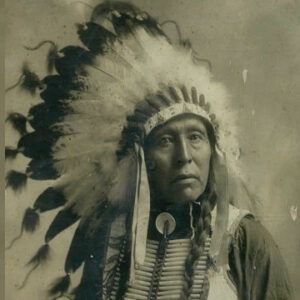Black Kettle was a member of the ‘Southern Cheyenne’ tribe who was admired for his efforts to maintain peace among his people. He lived during a time when the United States government was oblivious to the rights of Native Americans and repressed them with its overwhelming military power. He observed a period in which the government compelled Black Kettle to sign an unfair treaty, then disobeyed the treaty, and finally drafted a new deal to suit their needs. Black Kettle had the intelligence to recognize that they were no match for the Americans in battle, who would not hesitate to employ force against them, despite the abuses they had suffered. Therefore, he continued to sign illegitimate treaties, resulting in mutinies among his own tribe. Even after the ‘Sand Creek Massacre,’ which resulted in the death of Black Kettle’s childhood buddy and the grievous injury of his wife, he continued to pursue peace. Tragically, his efforts were ultimately in vain, as the government repressed the uprising and confined the Native Americans to limited land areas far from their ancient homes. For his efforts to bring peace to his people and for what he stood for, Black Kettle continues to be a highly regarded figure, especially among Native Americans, to this day.
Youth and Early Life
Black Kettle, or Moke-tav-a-to as his family named him, was born near the Black Hills in South Dakota. By 1832, he had relocated south in order to join the Southern Cheyenne tribe.
A Later Life
The US government and the Cheyennes signed the Fort Laramie Treaty of 1851, which granted the Cheyennes land in western Kansas and eastern Colorado.
After the “Pike’s Peak Gold Rush” of 1859, however, there was a widespread uncontrolled movement of white people into Cheyenne territory during the next three years. This resulted in territorial disputes between the Cheyenne and the Americans.
In 1861, the United States government compelled the Southern Cheyenne to sign a new treaty that granted them property along Sand Creek. Black Kettle, the tribal chief, signed the treaty out of fear of the American forces.
The designated land was unproductive and unfit for agriculture. Additionally, illnesses began to spread across the Cheyenne population. The Cheyenne, starving and destitute, began to steal from local people, passing wagons, and mining camps.
In 1863, Black Kettle and his childhood companion “Chief Lean Bear” met Abraham Lincoln in Washington, D.C. As a symbol of their affinity with the United States, they received peace medals and letters.
Due to a few isolated events, tensions between both sides rose in 1864 as a result of Cheyenne’s persistent attacks. In an effort to defuse the situation, Black Kettle visited with the local commander at Fort Weld and signed a treaty requiring all Cheyenne to report to Fort Lyon.
As Black Kettle retreated to Sand Creek, the Third Colorado Volunteers, led by John Chivington, violated the treaty by attacking the Cheyenne camp at Sand Creek.
In an effort to express Cheyenne’s peaceful purpose, Black Kettle waved both the American and white flags. However, the troops disregarded the warning and invaded the camp, killing 150 to 200 Cheyenne and mutilating their bodies. Black Kettle was able to survive.
The incident resulted in a clash of ideologies between the Cheyenne and Black Kettle, with some members of each tribe desiring to pursue peaceful negotiations while others desired to respond with further raids. Black Kettle signed the ‘Treaty of Little Arkansas River’ in 1865, which restricted his tribe to territories in southwestern Kansas.
In 1867, he signed the ‘Medicine Lodge Treaty,’ which assigned them distinct lands and promised them food and other supplies. However, these promises were never fulfilled, which encouraged more individuals to join guerrilla groups.
Black’s Major Conflicts
Black Kettle attempted to evade the massacre at Sand Creek by flying a white flag and an American flag over his Tipi. However, his attempts proved unsuccessful, and the soldiers assaulted anyhow, resulting in carnage. Black Kettle was able to leave without injury and even returned to help his injured wife. This violent event is known as the “Sand Creek Massacre.”
General Philip Sheridan planned a punitive assault against Cheyenne camps in 1868 in response to a string of attacks on Kansas farms. They attacked Black Kettle’s town despite the fact that its inhabitants were residing on their assigned territory. In the subsequent onslaught, Black Kettle, his wife, and more than a hundred other Native Americans perished.
Personal History and Legacy
He had four wives, and they were all sisters from the Wotapio tribe. After marriage, he began to reside with his wife’s clan and had seventeen children.
In 1865’s ‘Sand Creek Massacre,’ he lost his childhood companion, ‘Chief Lean Bear,’ yet he continued to work for peace.
In 1868, forces headed by “George Armstrong Custer” invaded the community where he was residing without justification. This time, Black Kettle was unable to flee, and he died on the banks of the Washita River.
Nick Ramus portrayed this revolutionary and tribe leader for three seasons on the CBS television series ‘Dr. Quinn, Medicine Woman
Estimated Net Worth
Unknown.
Trivia
This Native American leader was one of the few who sought peaceable negotiations with the United States government, as opposed to the guerrilla warfare techniques utilized by the other chiefs.


